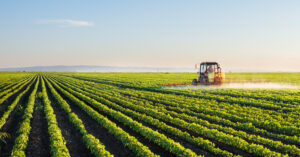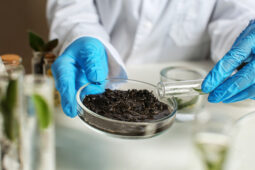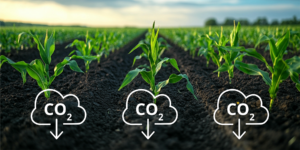While every farmer’s dream is a picture-perfect growing season that yields healthy crops from each seedling, there are many factors that prohibit this from becoming reality. Farmers are up against a myriad of challenges in their quest to ensure acceptable economic yields, many of which they have little control over particularly at the current time when input costs are higher than ever. Read on to learn more about these obstacles and the factors that are instrumental to driving better crop production in the face of increasingly tough conditions.
Challenges of Today’s Farmers
Farming in the 21st century is much different than it used to be. In 2008, farmers faced skyrocketing prices for fertilizer that had an immense impact on their profitability. In 2022, the price of fertilizer is once again on the rise. With fertilizer being so essential to crop yield, it’s a necessary supply for farmers. Unfortunately, with the cost of doing business much higher than in the past, some farmers with smaller acreages are being forced to abandon farming altogether.
Climate change is also affecting biodiversity and crop yields around the world. With more greenhouse gas emissions in the air, like carbon dioxide, farmers may see more invasive crops and weeds emerge. Rising temperatures are also worrisome, as an increasing number of heat waves and droughts will impact whether plants can effectively grow. Heat can also encourage weeds and pests to thrive, creating unsuitable conditions for crops. Furthermore, climate change leads to more frequent volatile weather conditions like storms and hurricanes.
Yet another challenge is the rise in population around the world and the development of agricultural land. The agriculture industry is pressured to help meet an increasing demand for food, and food of higher quality is taking on greater importance.
While these are not all of the issues farmers face, they are certainly some of the most pressing and will continue to have an impact on production and profits.
Factors Influencing Yield Potential
There are numerous factors that can impact yield potential, including:
- Soil productivity – Quality soil helps plants grow. The capacity of soil to support plant growth can be affected by many factors. The soil should be physically, chemically, and biologically viable for high yield productivity. If soil has lost its organic matter or biological diversity, and if soil is highly compacted, hard to break or devoid of earthworms, plants may struggle. Meanwhile, plants will have a better chance of thriving in soil that is home to worms, which drive soil aeration. Soil should also be looser in structure, which allows for water and beneficial organisms to filter through and find the plant’s roots.
- Nutrient availability – Plants thrive when they have consistent access to nutrients. These include primary nutrients like nitrogen, phosphorous and potassium, secondary nutrients like magnesium and sulfur and micro-nutrients such as boron and zinc. In some cases, products applied to soil can boost nutrient availability for a couple years, but then begin to mine the soil of its nutrients. This then requires farmers to counteract this nutrient loss with more fertilizer.
- Root development – While they’re unseen below the soil, roots play an important role in the overall health and productivity of a plant. Their purposes include anchoring plants into the soil and delivering the necessary moisture and nutrients to stimulate growth and help crops manage environmental stresses. Encouraging root development and fending off pathogens that can cause root rot is key, because without strong root systems, vital processes such as water and nutrient uptake will be affected.
- Plant vigor – The health and growth rate of a plant impacts its yield. The vitality of a plant can shift with changes in soil type, climate and even competition from other crops. Healthy plants regularly grow and produce leaves, stalks or buds that potentially yield more fruits and vegetables.
Stimulating your Way to Success
Stimulating plants’ natural processes can improve the suitability of the plants’ environment and support soil productivity, nutrient availability, root development and plant vigor. This can be accomplished by using fertilizer that is coated in high-quality microbial cultures. The blend of proprietary microbial cultures found in BiOWiSH® Crop Liquid can deliver consistent performance across a broad range of operating conditions at a low cost to farmers. Best of all, it doesn’t require farmers to change the way they apply fertilizer. Fertilizer manufacturers can coat BiOWiSH® Crop Liquid onto dry fertilizer or mix it with liquid fertilizer to create an enhanced efficiency fertilizer that is ready for use by the farmer.
Enhanced efficiency fertilizer can help farmers grow profits even when facing some of the toughest business challenges in recent history. For more information about the benefits of BiOWiSH® Crop Liquid, visit biowishtech.com/product/crop-liquid/.





